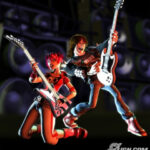The European tube numbering system can be confusing, especially when dealing with amplifier tubes. Let’s clarify the differences between some common output tubes used in guitar amplifiers, specifically focusing on the EL84 and 6CW5 families. While they may appear similar, understanding their nuances is crucial for any guitarist interested in tube amp technology.
The original post mentions confusion between “P” and “U” valves, but correctly identifies the output stage similarities. Let’s break down the tube numbers and their characteristics:
EL84 and its Variants:
The EL84 is a popular power pentode tube often found in guitar amplifiers known for its bright and crunchy tone. Several variations exist, primarily differing in heater voltage:
- EL84 = 6BQ5: These designations are essentially interchangeable, referring to the standard 6.3-volt heater version.
- XL84 = 8BQ5: This variant is designed for an 8-volt heater, which is less common but functionally similar to the EL84/6BQ5.
- 10BQ5: While mentioned, its European equivalent is not specified, and it’s noted as uncommon.
- 15BQ5: Also mentioned but extremely rare and without a European designation provided.
The 6CW5 Family and Misconceptions:
The 6CW5 family of tubes is often mistaken for EL84 variants due to physical similarities. However, they are distinct tubes with different operating parameters, particularly regarding voltage ratings.
- EL86 = 6CW5: Again, these are interchangeable names for the 6.3-volt heater version of the 6CW5.
- XL86 = 8CW5: An 8-volt heater version of the 6CW5.
- LL86 = 10CW5: A 10-volt heater variant of the 6CW5.
- PL84 = 15CW5: This is where significant misunderstanding can occur. The PL84 is a 15-volt heater version of the 6CW5 and is NOT an EL84 variant.
- UL84 = 45B5: Similarly, the UL84, or 45B5, is a 45-volt heater version of the 6CW5 and definitely not an EL84 variant.
Critical Differences: Voltage and Compatibility
While a 6CW5 tube physically resembles an EL84 and shares a similar plate structure, the internal screen grids are different, leading to drastically different voltage ratings. Plugging a 6CW5 into an EL84 socket can lead to tube failure and potential damage to your amplifier. This is due to the 6CW5 family being designed for different operating voltages.
Operating Voltages in Guitar Amplifiers
Many guitar amplifiers push EL84 tubes beyond their recommended plate voltage ratings to achieve desired tones. While some advertisements might boast extremely high voltage operation (like 700 volts, as mentioned in the original text – likely an exaggeration or misprint), the key to reliability with EL84s under high plate voltage is to keep the screen voltage under control, ideally below 320 volts, and even lower if pushing plate voltage limits.
The 6CW5 family, while having different absolute ratings, responds similarly to voltage adjustments. Experimentation within safe parameters can yield interesting results.
Practical Applications and Safe Practices
The original author mentions experimenting with 6CW5 tubes in push-pull (p-p) HiFi amplifiers and guitar amps. For HiFi applications, running 6CW5s at around 235 volts on both plate and screen with a 3300-ohm load provides a clean 15 watts of power.
For guitar amplifiers aiming for an “EL84 scream,” higher voltage and impedance are explored. Using 320 volts on the plate (achievable with voltage doublers) and a lower screen voltage (around 160 volts) is mentioned as a starting point. Pushing plate voltage towards 400 volts with even lower screen voltage (around 125 volts) is suggested for more power, but caution is advised, and experimentation should be approached carefully to avoid tube damage.
Conclusion
Understanding the distinctions between EL84 and 6CW5 tube families is vital for guitar amplifier maintenance, modification, and design. While 6CW5 tubes are not direct replacements for EL84s, they can be utilized effectively in guitar amplifier circuits with careful attention to voltage ratings and circuit design. Always prioritize safety and consult tube datasheets before experimenting with tube substitutions or voltage modifications in your guitar amplifier.

